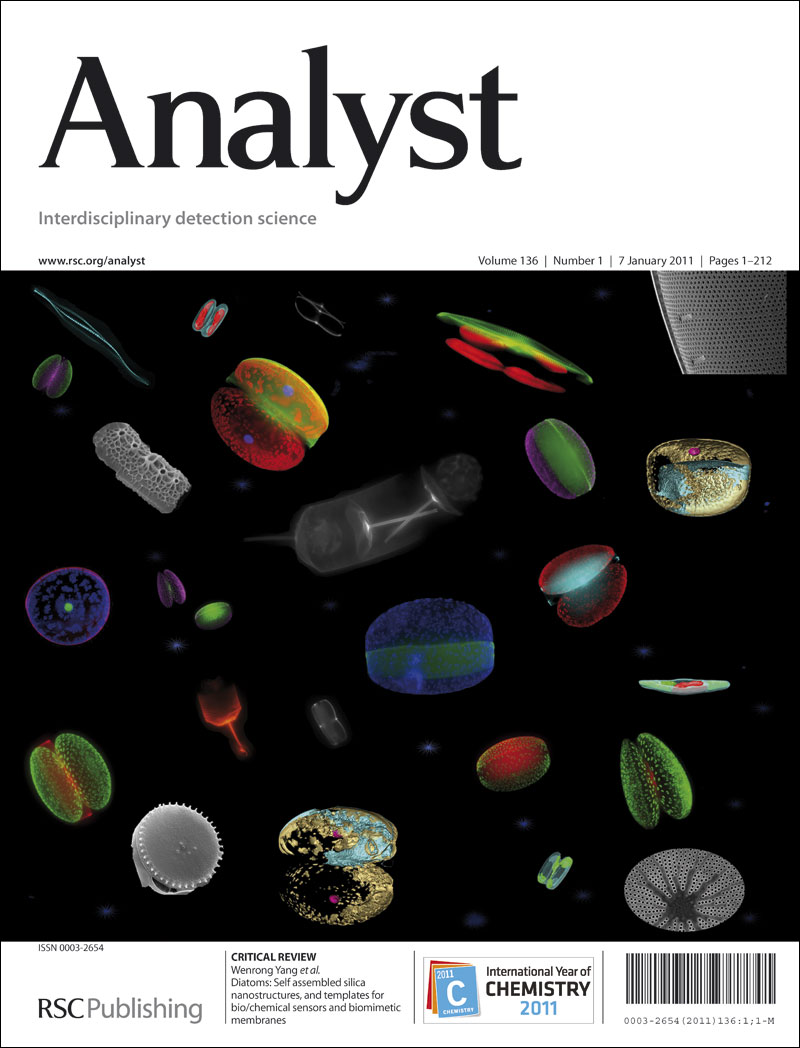Development of highly sensitive, highly selective and high-throughput method for determination of total ascorbic acid
IF 3.6
3区 化学
Q2 CHEMISTRY, ANALYTICAL
引用次数: 0
Abstract
A highly sensitive, highly selective, and high-throughput method for determination of intracellular total ascorbic acid (AA) was developed by measuring the fluorescence intensity of 1,2-diamino-4,5-methylenedioxibenzene (MDB)-labeled AA. First, the reaction buffer, temperature, pH, and time were investigated to establish optimal reaction conditions, and it was found that AA was detected with high sensitivity by reacting oxidized AA and MDB in 100 mM citrate buffer (pH 5.0) for 10 min at room temperature. Next, a scale-up synthesis was performed to determine the chemical structure of the MDB-labeled AA, and its excitation and emission wavelengths were optimized to 375 and 450 nm, respectively. HPLC analysis revealed that MDB reacts with AA with high selectivity under the established conditions. It was also found that AA could be determined under optimal reaction conditions, regardless of the presence or absence of cellular components. In conclusion, the established method for determination of AA with MDB can quantify AA in the range of 25 nM to 20 µM in a microplate with a detection limit of 10 nM. Furthermore, the method was confirmed to be able to quantify intracellular AA in a cell line by comparison with a standard HPLC method. This method is applicable to highly sensitive, highly selective, and high-throughput analysis and could be applied to the determination of AA in various cells used in the evaluation of AA activity.高灵敏度、高选择性、高通量测定总抗坏血酸方法的建立
通过测定1,2-二氨基-4,5-亚甲基二氧苯(MDB)标记的AA的荧光强度,建立了一种高灵敏度、高选择性和高通量的测定细胞内总抗坏血酸(AA)的方法。首先,考察了反应缓冲液、温度、pH和时间,确定了最佳反应条件。结果发现,在100mm柠檬酸缓冲液(pH 5.0)中,氧化AA和MDB在室温下反应10min,可以获得高灵敏度的AA。接下来,我们进行了放大合成,确定了mdb标记的AA的化学结构,并将其激发波长和发射波长分别优化为375和450 nm。高效液相色谱分析表明,在确定的条件下,MDB与AA的反应选择性高。还发现,在最佳反应条件下,无论是否存在细胞成分,都可以测定AA。综上所述,建立的MDB测定AA的方法可在25 nM ~ 20µM范围内定量测定AA,检测限为10 nM。此外,通过与标准高效液相色谱法的比较,证实了该方法能够定量细胞系的胞内AA。该方法具有高灵敏度、高选择性、高通量分析特点,可用于评价AA活性的各种细胞中AA的测定。
本文章由计算机程序翻译,如有差异,请以英文原文为准。
求助全文
约1分钟内获得全文
求助全文
来源期刊

Analyst
化学-分析化学
CiteScore
7.80
自引率
4.80%
发文量
636
审稿时长
1.9 months
期刊介绍:
"Analyst" journal is the home of premier fundamental discoveries, inventions and applications in the analytical and bioanalytical sciences.
 求助内容:
求助内容: 应助结果提醒方式:
应助结果提醒方式:


